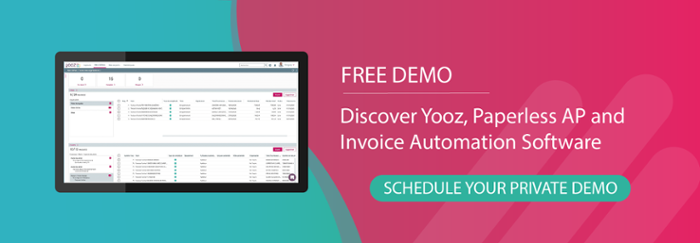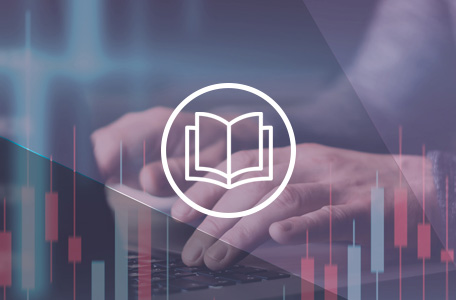It was 2019 when Her Majesty’s Revenue and Customs (HMRC) went live with the Making Tax Digital (MTD) for VAT initiative as part of the movement towards digitisation in finance. The movement had a single, simple vision: upgrade the entire tax system and end the dread that businesses associated with submitting taxes. All this by 2020. However, it now feels like forever since we were told “Tax returns will become a thing of the past”, with a global pandemic stalling progress on building the tax system of the future.[1] In fact, a recent report uncovered four out of five UK businesses were still lacking Making Tax Digital software, with many still searching for compatible tools in order to be compliant.[2]
Despite a few bumps in the road, the ambitious initiative has seen HMRC transform itself into one of the most advanced tax administrations. In a world where business processes are becoming increasingly digital, software systems such as Accounts Payable (AP) automation are preventing finance teams from making costly errors as well as providing better tools for record-keeping and auditing purposes.
The ultimate aim for MTD is to streamline and simplify the tax process for businesses, which in extension will help close the UK’s tax gap which alone is worth tens of billions of pounds. And the process is working, albeit slower than expected. The use of technology and automated tools has already helped businesses and promises to further reduce the room for and likelihood of errors when filling out tax returns, primarily stemming from manual processes still found in finance departments across the UK today.
What is Making Tax Digital?
If you’re still unsure what Making Tax Digital is then and how it affects you then don’t panic. An HMRC report exploring the barriers and enablers to MTD found a severe lack of knowledge, information, and skills were stopping businesses from becoming compliant.[3] The vast majority of businesses are eager to comply with Making Tax Digital as well as implement software that helps protect them, but knowledge gaps are slowing progress despite the availability of various types of (transition) support.
Since April 2019, Making Tax Digital has required UK businesses that turnover more than the £85,000 VAT threshold to process their tax returns online. The aim is to bring HMRC and all business processes into the digital age while making tax returns faster, more efficient, and more accurate. Other benefits include a more comprehensive record-keeping system, reducing the UK’s tax gap, and encouraging businesses to go fully paperless as keeping paper income and expense records will eventually not comply with MTD.
As of April 2022, the next step requires that all businesses that are VAT registered, even those that were previously exempt in previous years such as small businesses, have to be MTD compliant. As of April 2022, businesses that charge VAT will need to comply with Making Tax Digital, even if they turnover less than the previous £85,000 threshold. Businesses affected from the change would have been notified of the upcoming deadline, something which will impact more than one million small businesses (including the self-employed) in the UK.
How does Making Tax Digital impact me?
There are many ways in which Making Tax Digital impacts UK businesses of all sizes, but it’s important to note that despite what seems like a whole host of changes, it’s relatively business as usual - just with an extra helping hand to make sure you remain compliant.
Businesses that are still sending their tax returns by post or submitting them online via the HMRC portal will have to maintain records digitally and file VAT returns through approved accounting and finance systems such as Quickbooks, Sage, Xero, and more. Businesses that don’t comply face hefty fines and penalties. If the tax returns submitted contain careless or deliberate mistakes, businesses could face a fine of up to 100% of the VAT owed, or 30% if businesses fail to inform that the submission is too low.
It’s important to get MTD right, and those businesses that have delayed or put off their digital transformation journeys up until now face a race against time to meet the April 2022 deadline. Non-VAT registered businesses have until April 2024 to become MTD compliant, but we know all too well that it’s never too soon to start putting the right procedure into practice.
Besides, there are plenty of benefits to implementing digital systems for financial reporting. An HMRC survey on the impact of MTD software found that businesses thought the benefits of MTD compliant software outweighed the costs, helped increase confidence in getting tax submissions right, and reduced the total time spent checking submissions.[4]
Plus, there are very little costs associated with implementing new Making Tax Digital software systems. The same HMRC report highlighted that the average transitional cost for businesses was just over £400, but there were many businesses that said they had zero costs associated with changing systems. In fact, the most commonly reported costs that businesses reported on were the prices associated with discussing changes with an accountant (12%) and introducing staff training (9%).
How does Accounts Payable automation help with Making Tax Digital?
Businesses from here on out will need to use software compatible with Making Tax Digital in order to produce, send, and record their tax returns. HMRC has a long list of compatible software systems that you can search for free here, but it includes familiar products on the market such as QuickBooks, Sage, and Xero. Some of the products actually offer VAT-specific features but the compatible software makes it simple and easy to file tax returns using HMRC's MTD service. It’s worth mentioning that you don’t have to only use one piece of software, especially if you’re a large business or global corporation with different systems already in place, as long as you have the correct processes in place to link your processes to your tax returns submissions.
One of the ways you can do this is by making use of accounts payable software on top of your financial system, which is able to automate a lot of the manual processes currently involved with tax submission errors. Accounts Payable software used for Making Tax Digital can make better use of the invoice data you have located in your digital records to provide real-time reporting and a better picture of your business’s tax data, as well as significantly reducing the likelihood of errors in tax submissions and therefore the chances of your businesses being fined.
By implementing automated accounts payable software, backed up by Artificial Intelligence and Machine Learning technology, businesses can almost completely remove human and manual intervention from the entire process, aside from double checking for inaccuracies or potentially fraudulent activity. Plus, with automated accounts payable software in the cloud, Making Tax Digital compliance is made even easier. Tax returns can be submitted via computer, smartphone or tablet, wherever relevant employees are based, and at a time that suits them.







